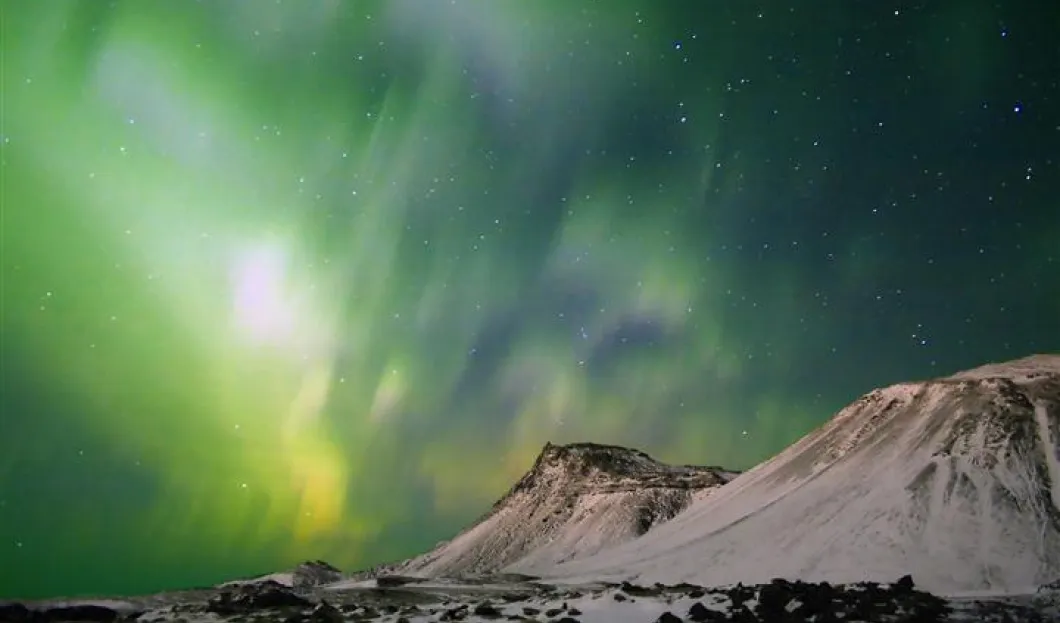
Iceland was the first nation to struggle with the financial crisis. In 2008, the island of 300,000 in the North Atlantic was close to ruin. Suddenly, the country had a devastating amount of debt. However, Iceland also is among the first who successfully recovered from this crisis, mainly thanks to the tourism sector. But since then, several drawbacks have manifested themselves.
The popular geyser Strokkur remains as reliable as ever, spitting up to 30-meter-high fountain into the air every 10 minutes. Tourists are happy, their cameras clicking. Some days, thousands of people arrive to witness this wonder of nature.
When cruise ships dock in the harbor, they fill up ten to fifteen buses. The geyser is a part of the golden circle – a cruise around the three most popular nature sights, also including water fall Gullfoss and Þingvellir national park.
Not all guests however are aware how fragile nature is around the arctic circle and that its flora needs several years to recover from trampling or being ripped apart. Neither are they aware that this area of nature houses dangers that can easily be underestimated.
Park guide Einar Sæmundsen has to erect more and more signposts which weren’t necessary only a few years ago: "95 percent of tourists pay attention to the rules, but we still need to change a handful of things in order to protect both nature and people. Actually, this is getting quite a large debate around here, how to come up for costs that arrive with the growing numbers of tourists. They are not sure if sights should charge for access, or if every guest should pay a tax upon arrival in this country, or whatever.”
Ásgeir Jónsson, professor of economics at the university of Iceland, deems some form of nature protection tax or fee necessary. This would not only cover costs but also possibly reduce the number of tourists, slowing down the influx of previous years which had increases of up to 20 percent. For the upcoming year, Iceland tourism sector expects roughly 1.5 million visitors, a number which is five times larger than the local population.
"If even more tourists decide to visit this country, we will have to expand the airport, which has already reached its full capacity, expand our roads, and build more hotels. We need to make these investments now," said Jónsson.
Meanwhile, tourism has exceeded the fishing industry, which used to be Iceland’s most important economic sector. This was a large factor in Iceland’s speedy recovery from the financial crisis. However, a new bubble is about to burst, according to the economist Jónsson:
"This industry is growing too fast. The large number of investments being made in tourism sector can lead to an equally large debt. And if too many guests come to the country, contrary to expectations, tourists may find everything too crowded. It’s all just too much right now. There’s a certain risk of economic overdependence on tourism."
Meanwhile, the Icelandic tourism board has reacted to these developments and focuses its efforts on making the off-season attractive with their successful campaign "Inspired by Iceland". They advertise jeep tours in the snow, snowmobile trips, or aurora borealis tours. This is a motivation for guests to arrive in the less popular months of the year, explains Inspired by Iceland project leader Daði Guðjónsson:
"As of now, our largest increases can be seen outside of the main season, which has still potential for growth, so we can spread out the total number of guests over the entire year."
A more consistent distribution makes sense, economist Jónsson agrees. In his opinion however, there is no more room for growth in the main season. Many Icelanders agree, and this is only part of larger concerns: mainly, how to find a balance between the economic interests of the population and the Iceland tourism sector.
In order to deal with the large influx, Iceland already depends on foreign workers. In most restaurants, cafes and super markets, hardly any Icelandic can be heard anymore, making Icelanders feel like strangers in their own country.










